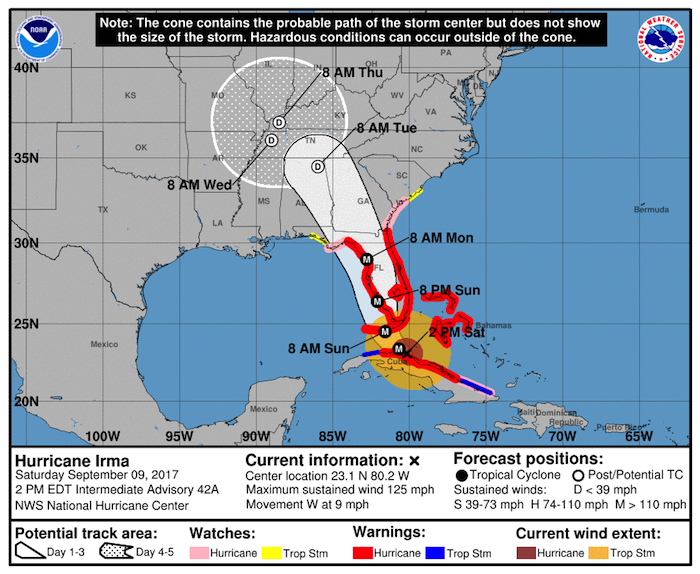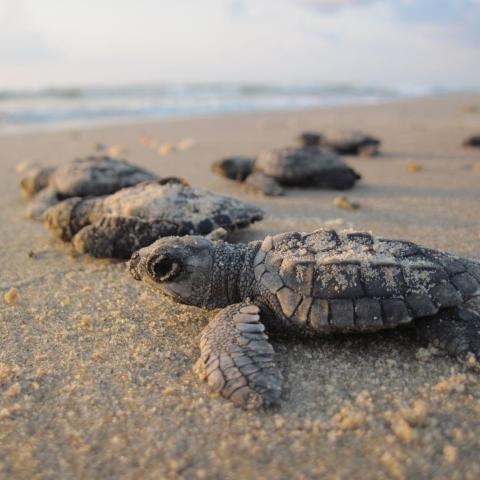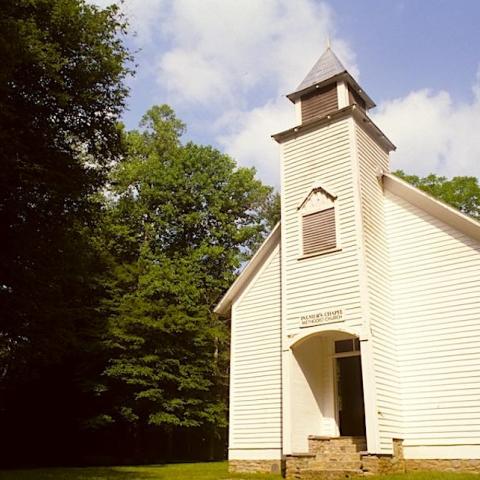
While crews were continuing Saturday to assess damage to Virgin Islands National Park from Hurricane Irma, parks on the mainland as far north as Great Smoky Mountains National Park in North Carolina and Tennessee were bracing for the storm.
At Virgin Islands National Park on the island of St. John in the U.S. Virgin Islands, all Park Service employees were accounted for and safe, but employee housing took a substantial hit. Emergency personnel who arrived on the island Friday went to work spreading tarps over roofs that had been damaged or destroyed, and covering windows with plywood in advance of Hurricane Jose, which spared the island by moving farther north.
"Power has been restored to the park visitor center and emergency crews are working to re-establish communication lines," the Park Service reported Saturday afternoon. "Park facilities without external power or water are operating on generators and have stored supplies and water for staff.
"Parks located on the island of St. Croix (Christiansted National Historic Site and Salt River Bay National Historical Park) suffered less damage. They have external water and sporadic power and are currently closed," the agency added. "San Juan National Historic Site in Puerto Rico sustained minor damage. The park is currently without power and will reopen once power has been restored."
On the mainland, all park units in Florida were battened down and closed for the hurricane's arrival. According to the Park Service, coastal parks in Georiga also were closed, while most inland units in Georgia were waiting to see the storm's path before deciding whether to close.
At Andersonville National Historic Site in Andersonville, Georgia, officials decided to close on Monday with plans to reopen Tuesday, while the Jimmy Carter National Historic Site planned to be closed Sunday and Monday,
At Gulf Islands National Seashore on the coasts of Florida and Mississippi, park staff were telling Fort Pickens campers to "begin securing loose objects and be prepared for possible evacuation (Sunday) due to wind advisory nearby and high winds expected."
In South Carolina, Congaree National Park closed on Saturday. Also closed was Fort Sumter National Monument, and the Charles Pinckney National Historic Site.
At Great Smoky Mountains, park staff said Saturday that the current forecast was predicting that Irma would be reduced to a tropical depression rated-storm by the time it reached the park early Monday.
"Officials anticipate sustained winds of 30-50 mph with higher gusts throughout Monday and into Tuesday, with the most severe weather predicted for Tuesday," a park release said. "Rainfall amounts of 2-5 inches Monday afternoon through Wednesday morning are likely, with higher rainfall amounts possible for the North Carolina side of the park. Due to the potential for these conditions to cause downed trees, flooding, and landslides the following closures will be put into effect."
The following closures were either put in place or planned:
Closed Saturday:
Picnic Areas
* Big Creek, Collins Creek, Deep Creek, and Heintooga
Front Country Campgrounds
* Balsam Mountain, Big Creek, and Deep Creek
Horse Campgrounds
* Big Creek and Round Bottom
Roads
Tennessee
* Ramsey Cascade Road including Ramsey Cascade Trail
* Tremont Road (Upper) from Tremont Institute to Middle Prong Trailhead
North Carolina
* Balsam Mountain Road
* Clingmans Dome Road
* Deep Creek Access Road and Tom’s Branch
* Heintooga Ridge Road/Round Bottom Road/ Straight Fork Road
* NC Hwy 284
* Twentymile
Facilities/Concession Operations
* Appalachian Highlands Science Learning Center at Purchase Knob
* Clingmans Dome Information Center
* Leconte Lodge
Closing Sunday
Picnic Areas
* Cades Cove, Chimneys, Cosby, Greenbrier, Metcalf, and Twin Creeks
Campgrounds
* Abrams Creek, Cades Cove, Cataloochee, Cosby, Elkmont, and Smokemont
Horse Campgrounds
* Anthony Creek, Cataloochee, and Tow-String
Roads
Tennessee
* Abrams Creek Road
* Cades Cove Loop Road at 6 p.m.
* Cherokee Orchard Road
* Cosby Access Road
* Elkmont Road
* Forge Creek Road
* Greenbrier Road
* Laurel Creek Road
* Little River Road
* Rich Mountain Road
* Roaring Fork Motor Nature Trail
* Tremont Road
* Wear Cove Gap Road
North Carolina
* Cataloochee Road
* Lakeview Drive
Facilities
* Appalachian Clubhouse and Spence Cabin
* Cable Mill Visitor Center
* Cades Cove Stables
* Smoky Mountain Stables
* Smokemont Riding Stables
* Sugarlands Riding Stables
* Tremont Institute
Scheduled closures will make most park trailheads inaccessible, the park said.
"Overnight backcountry use is not recommended beginning Sunday through Thursday due to the potential threat of downed trees and flooded stream crossings causing rivers and trails to become impassable," it added. "All backcountry reservation holders are encouraged to alter their trip plans. Refunds will be available to those who are unable to reschedule their trip for an alternative date.
"Additional closures may become necessary as the storm progresses. Following the storm, roads, campgrounds and facilities will reopened as quickly as possible once staff evaluate the conditions and determine they are safe for opening."




 Support Essential Coverage of Essential Places
Support Essential Coverage of Essential Places







Comments
I've been to Fort Jeffeerson in the Dry Tortugas several years ago when my eldest daughter got married in Key West, as a side-trip.
I love it. I have been concerned about Fort Jefferson and potention damage from Hurricane Irma and wonder if the Fort was damaged in any way. I would hate to see the Fort damaged, and am wondering if it suffered damage from Hurricane Irma?
I was thinking the exact same thing, it seems to me that the eye of Irma would pass RIGHT OVER the fort/park, and I was wondering if it could withstand that type of force...It would speak volumes about the engineering of the day I suppose...please post photos, and updates to Fort Jefferson as soon as you can when the danger passes...thank you
I keep looking for information on it too. I know that people are concerned about their own safety, but hopefully someone can fly or sail by and send a report. I can't imagine anyone stayed on the island during the storm.
Yes please my husband and have camped her many times and its our second home. I hope its ok
Yes, What about Dry Tortugas National Park? I was just there in November.
https://www.nps.gov/drto/planyourvisit/conditions.htm
Doesn't look like it can be good out there, and another one's on the way - tragic!
https://www.nps.gov/drto/planyourvisit/conditions.htm
PEr article posted on 9/12/17 by CBS North Carolina everyone at the park evacuated have yet to return. Given that the park servioce contracts with a private ferry sevice for access from Key West I'm sure it is a low priority until basic services return to the keys. Any park officals still in the keys I'm sure are putting their skills and talents to good use helping those that stayed. Given the tract of the hurricane I'm going to say the park probably only received trapical storm or catagory 1 force winds and little storm surge.